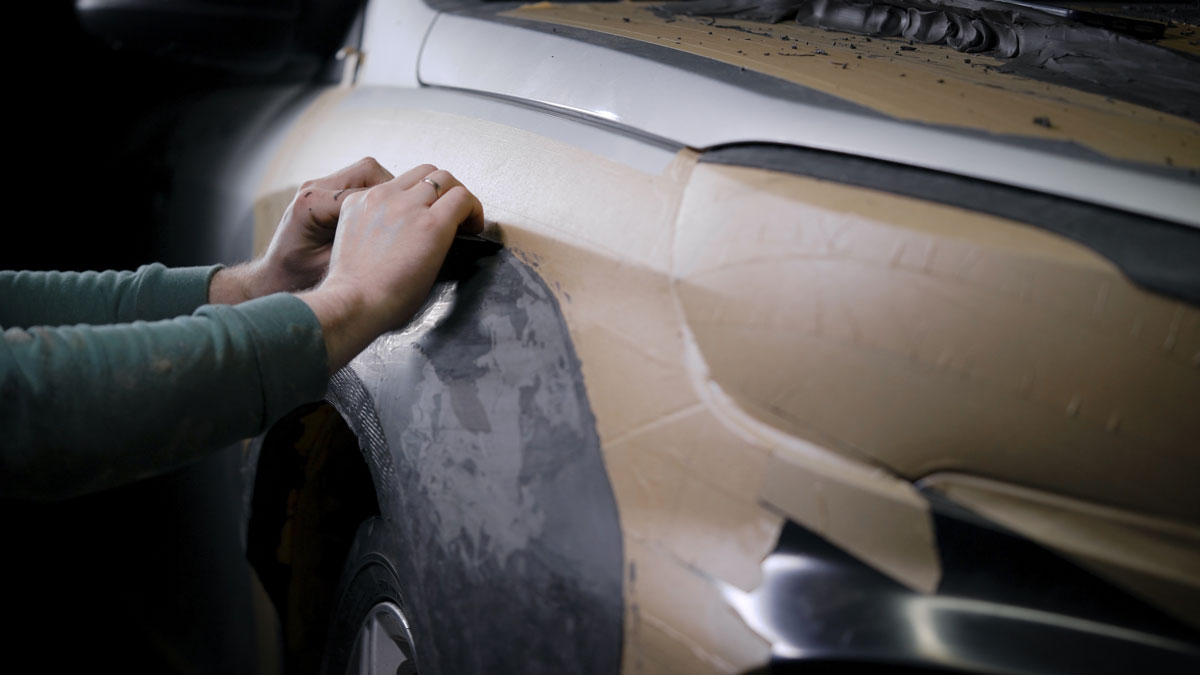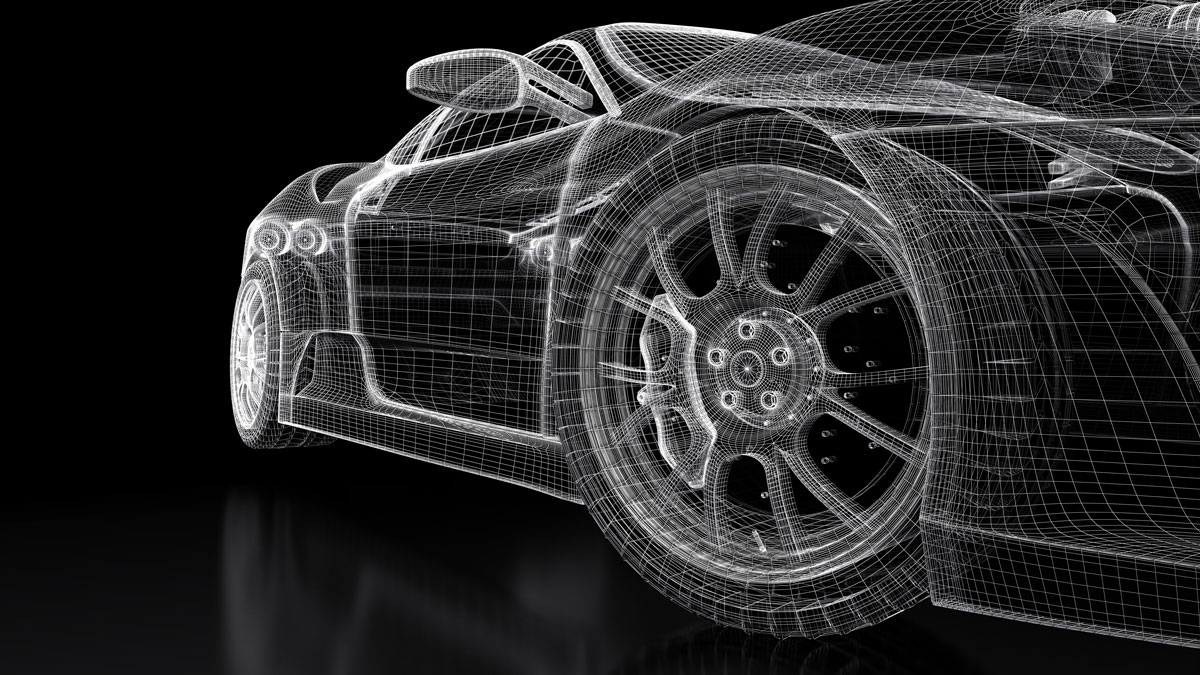Design is revolutionary by nature, but the same can’t be said about the design process. If you’ve ever wondered what would it take to streamline the design process, keep reading. This article discusses how to bring process improvement across the board.
Design process: Where are we today?
Design is more than just a creative discipline: it has transformative power and can help improve people’s lives. And according to a McKinsey survey, design can also bring enormous business value, as long as companies prioritize efficiency and innovation.
However, that may be easier said than done. Although design is inherently innovative, the process behind it isn’t always efficient. Over the past few decades, this process has been transformed by the development of specialized software and new technologies. Nevertheless, it’s still riddled with frictions and inefficiencies, some of which have become very noticeable during the past year.

© Looker_Studio / stock.adobe.com
In the automotive sector, the design process is particularly fragmented. Automotive design takes place over multiple stages, each of which fulfills different functions. In turn, each of these functions require its own set of tools, skills, and processes. Automotive designers currently use a rather mismatched range of low-tech tools like pen and paper or clay, alongside tech tools like CAD software.
In addition to this, design ideas must go through a lengthy chain of review. This requires reaching agreements between different departments and professionals, from designers to digital modelers and including visualization experts, managers, and technicians.
However, there are alternatives to this long-winded system. In this article we’ll discuss how new ways of thinking and new tools can help remove obstacles to communication, collaboration, and creative freedom.
Three principles for a better design process
1. Less is more when it comes to your design process ‘ at least, sometimes!
Since the mid 2010s, we’ve seen important technological advances gain traction in many industries. In some cases, this added complexity to the design process, but it doesn’t have to be this way. Technology can help simplify design and manufacturing processes and focus on what really matters.
For example, Dutch construction company Van Wijnen has been using 3D models to inform the building process. The outcome? Their production process became 50% shorter.
Similarly, Mercedes Benz has been using new technologies to consolidate their design process and bridge gaps between designers and engineers.
Examples from the FinTech industry suggest that design success isn’t just about adding functions. Instead, success depends on streamlining processes in a way that solves real-life problems.
2. Always a step ahead
Sometimes, design fulfills its role by responding to social changes. But revolutionary design anticipates those changes and their impact on society. For designers, this means that it’s crucial to be familiar with the most pressing social challenges. This can bring the social and human aspects of design to the forefront and set the foundation for innovative solutions.
Being a step ahead is particularly critical today, since society is at a pivotal point. For example, a new regulatory environment is on the horizon for the automotive industry. In addition to carbon emission requirements, there’s a growing need for connected vehicle technology and experiential design.
These challenges are likely to drive design trends in the near future. The best strategy is anticipating future developments and finding ways of aligning changes within the design process.
3. Balancing safety and variance
In many cases, designers working in corporate settings have very little leeway in terms of variance. The standard approach involves choosing an idea and putting it through the workflow with as little variation from the original as possible.
In a way, this is a bias towards safety ‘ and it’s deeply ingrained in the design industry. This is understandable, since it’s not always feasible to simultaneously work on multiple design concepts. We can’t forget that design is a commercially-oriented discipline where variance is sometimes ruled out because it’s not profitable.
However, an excessive focus on avoiding the unexpected can be restrictive. And a restrictive approach is detrimental to innovation, which is an integral aspect of design. In this sense, revolutionizing design entails challenging the industry’s status quo. But this can’t be done without the tools that facilitate this vision.
Embracing digital transformation in the design process
Platform standardization has been one of the major developments in the design industry. For the automotive sector, this has mainly involved adopting modular design tools. This has certainly brought about improvements in design and assembly, reducing costs and improving time-to-market.
But perhaps it’s time for more integral changes in the design process. Changes where standardization isn’t at odds with the creative essence of design and where it doesn’t compete or hinder commercial interests.
Virtual reality can help businesses respond to changing needs and manage increasing complexity without lengthening the design process. Here’s how this technology can revolutionize the process:
1. Empower designers working remotely
Designing in VR enables the creation, curation, and exchange of ideas irrespective of location and without needing access to specialized equipment.
Using VR creation tools, designers can materialize their idea into precise renderings right from the start. This also means that they gain control over the creation process while working in a highly secure environment.
2. Improve the communication and collaboration flow during the design process
Current design tools are only partially efficient when it comes to communicating nuances in the designer’s vision. The shortcomings of some tools are even more obvious when trying to get an idea across different departments.
On the other hand, designing in VR can bring impressive efficiency gains. This technology makes it possible to single-handedly portray a concept in full detail. In doing so, it can potentially eliminate physical boundaries, validate concepts, break silos, and enable collaboration in real time.
3. Save time with a lean design process
VR transforms the design process by helping consolidate its stages. For example, conventional automotive design processes have 15 stages and take 30 weeks to complete. Using virtual design technology can reduce stages to just 6 and time to approval to 7 weeks. Ultimately, fewer stages and resources translate into operational savings and a shorter time to market.
4. Unlock creativity
Lastly, the flexible nature of VR design tools can give designers more autonomy and freedom to experiment. In turn, this can foster ground-breaking innovation. Moreover, this technology can take the risks out of the development process and truly nurture design talent.
Conclusion
Like society, design is under constant transformation. To cope with change, it’s important to assess the efficiency of the entire design process and discard obsolete views and tools. In this article we’ve discussed the building blocks of game-changing design.
First, it’s a matter of perspective. We believe the focus should be on process simplification, anticipation, and balance between control and creativity. This must be coupled with the adoption of tools that help re-engineer the creation process. Virtual reality can be the linchpin your organization needs to revolutionize the design process from ideation to final product.


